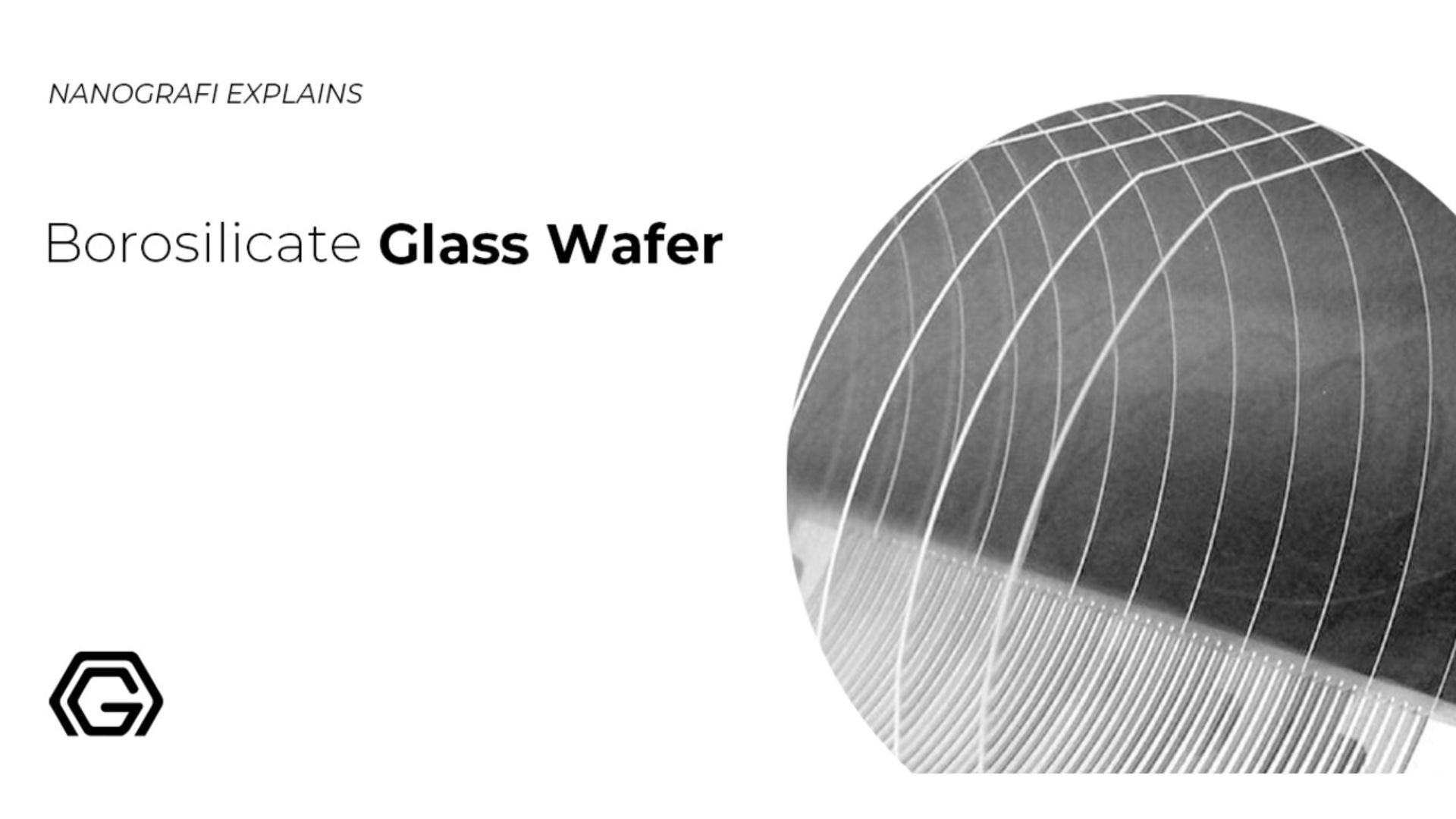Prime Cz-Si Wafer
CZ-Si wafers are important semiconductors utilized in several different areas. The application areas of Cz-Si wafer include computer chips, transistors, electrical circuits, solar cells, and aerospace applications.
Cz-Si wafers are produced through Czochralski single-crystal growth method. This method provides high volume production, large wafer diameters, and adequate resistivity. These wafers are commonly doped with boron, phosphorus, arsenic, or antimony.
Introduction
Silicon (Si) is the key player of semiconductor universe which is the back bone of advanced electric devices. Before the use of silicon in semiconducting applications, germanium (Ge) was used in creating transistors. However, in the early 1950s, silicon was found to be a better semi-conducting material than the initial germanium. The developments on the semiconducting Si materials are expected to lead the way for ultra-large-scale integration (ULSI ) and system-on-a-chip (SOC ) eras. Even though silicon is not the optimum choice for every electronic device, its advantages such as wide band gap and abundance indicate that silicon will be dominating the electronic industry. Silicon comprises about 30 percent of the earth’s crust.
Development of Silicon Wafers
Single-crystal silicon wafers are the basis of silicon semiconducting materials. Thus, their development and production are important tasks for the improvement of electronic industry. Two different approaches are taken on the single-crystal growth for silicon wafers; czochralski (Cz) and floating zone (FZ) method. These methods are used to produce single-crystal silicon ingot which is than further processed for the production of silicon wafers. Both growth methods are well-known and widely used in the industry. Even though FZ method provides higher purity, this method is much more expensive and the product diameter can only reach up to 150 mm due to the surface tension limitations during growth. On the other hand, the CZ method is cost-effective and has shorter production time. The majority of commercial silicon wafers are produced by CZ method. Resulting Cz-Si wafers are utilized in various different areas such as production of transistors, computer microchips, electric circuits, solar cells, and protection of aerospace materials from the harsh environments.
The Czochralski Method
The Czochralski method was named after J. Czochralski who established a technique for determining the crystallization velocities of metals. However, the actual single-crystal growth technique was developed by Teal and Little by modifying the Czochralski’s principle. Czochralski method is successfully applied to the growth of silicon single-crystals with a high degree of perfection that meet state-of-the-art device demands. Czochralski silicon sacrifices purity for optimal resistance to thermal stress, high production speed, and low cost. This method contains three main steps; polysilicon melting, seeding and growing. Temperature of molten silicon is kept around 1240°C. The difference of CZ technique is in the pulling procedure which uses a quartz crucible to contain the molten silicon. Near the end of the growth process, but before the crucible is completely drained of molten silicon, the crystal diameter must be gradually reduced to form an end-cone in order to minimize thermal shock, which can cause slip dislocations at the tail end. Almost any kind of polycrystalline Si seed form can be used in this process providing a great flexibility to the operation.
The wafering process of produced Si single crystal includes high-speed wire saws that can wafer one or more entire ingots in one operation or conventional inside diameter (ID) saws. The high speed wire saws can produce about 500 wafers/hour compared to about 25 wafers/hour for older inside-diameter (ID) saw technology.
To get more information about wafers,
you can read our blog post here.
Properties of Cz-Si Wafers
The control of properties and characteristics of Cz-Si wafers is important for the application in semiconductor industry. The electrical, mechanical, chemical and surface features are important parameters of Cz-Si wafers. Cz-Si wafers are commonly circular in shape while its dies are rectangular or square shaped. The diameter of a Si wafer can reach up to 400 mm with Czochralski method however; most of the commercial Cz-Si wafers have the diameters between 75-200 mm. A Cz-si wafer usually has a flatness of 1-3 microns depending on its application. Furthermore, a Cz-Si wafer should be free from damage and all kinds of roughness to become qualified for high performance.
Dopants, which are used to obtain desired resistivity, are an important part of Cz-Si silicon. The appropriate dopant must have suitable energy levels, high solubility, suitable or low diffusivity, and low vapour pressure. Based on the dopant selection Cz-Si wafers are categorized as n or p type semiconductor. Dopants are added to the silicon melt according to the resistivity-concentration relation. The most common dopants for Cz-Si wafers are boron (B), arsenic (Ar), antimony (Sb), and phosphorus (P). Phosphorus is the most commonly used donor dopant for silicon while boron is the most commonly used acceptor dopant. However, for the n+ silicon in which donor atoms are heavily doped antimony is usually used instead of phosphorus because of antimony’s smaller diffusivity. High diffusivity or high vapour pressure of dopants leads to undesirable diffusion or vaporization of dopants causing unstable device operation and difficulties in achieving precise resistivity control. Another important consideration is the segregation coefficient of dopants. Preferably the segregation coefficient must be close to unity to obtain a uniform resistivity throughout the Cz-Si crystal ingot. The electrical properties of Cz-Si wafers depend highly on the dopant type and concentration thus, can be manipulated through changing these parameters.
Applications of Cz-Si Wafers
Cz-Si wafers have a wide range of application areas including semiconductors, microchips, solar cells, aerospace applications, transistors, integrated and printed board circuits.
The high mobility of Cz-Si semiconductors at high and low temperatures makes them a desirable candidate for electrical devices. Electrical current moves faster through silicon semiconductors than most conductors. Hence, Cz-Si wafers are preferred in the manufacturing of electrical circuits of smartphones, televisions, and other electrical devices. Furthermore, Cz-Si wafers are used in the manufacturing of computer high-performance microchips. The manufacturing of these special microchips include photolithography in which the Cz-Si wafer is covered with a photo resist layer and left exposed to UV light, etching in which the chip pattern is applied onto the wafer directly, then electroplating in which an insulation layer is applied on top. The produced chips are used in various areas such as vehicles, home appliances, phones, and video game counsels. Doped n and p-type Cz-Si wafers are also utilized in the development of transistors, integrated and printed circuit boards.
Another important application area of Cz-Sİ wafers is the solar energy industry. Cz-Si wafers are used in the solar cells to convert solar energy to electricity. Advanced solar cells require single crystals of very high perfection for high efficiency. Photovoltaic applications require prime single-crystal silicon with ass little structural defects as possible since structural defects influence the electrical properties of the wafer. The Cz-Si wafer is often coated with an anti-reflective layer to reduce the loss of sunlight during the process. The wafer is encapsulated in a clear glass or silicon material and placed in a metal frame mostly made of aluminium.
Cz-Si wafers are also utilized in aerospace applications due to their exceptional properties such as temperature resistance. In aerospace applications Cz-Si wafers are mostly used as binding materials, coatings, encapsulation of electronics, insulating and protecting the materials from harsh environment of high altitudes. Cz-Si wafers are useful in both manufacturing of original equipment and maintenance, repair, and overhaul operations.
The application areas of prime Cz-Si wafers increase with the development of new technologies hence, the value of Cz-Si wafers increases each day.
Conclusion
Silicon is an exceptionally important material for the advanced technological devices. Single-crystal silicon wafers are high performance semiconductors which are valuable in several different application areas. Amongst the two different single-crystal growth methods, Czochralski method is the commercially most commonly used method since it is suitable for high volume production and provides larger silicon wafer diameters. The Cz-Si ingot produced by the Czochralski method is the cut into single wafers with the use of high speed wire saws or inside diameters saws. Cz-Si wafers are often doped with different dopants such as boron, arsenic, antimony, and phosphorus depending on the application area. The wide range of Cz-Si wafer applications includes electronic devices, photovoltaic cells, and aerospace applications. Cz-Si semiconductors are utilized in the manufacturing of transistors, computer microchips, electrical circuits, integrated and printed circuit boards to be used in computers, home appliances, vehicles, and countless other electronic devices. Based on the development of technology and increasing importance of advanced devices as well as solar energy systems indicate that the Cz-Si wafers will continue to play an important role in the industry.
To get more information, you can visit Blografi.
References
- Shimura, F. (2007). Single-crystal silicon: Growth and properties. shep, 255.
- Silicon Info: Single-Crystal Ingot Growth. (n.d.). Retrieved July 06, 2020, from http://www.siliconsultant.com/SIcrysgr.htm
- Karataş, ö. (2019). Cz-Si Wafers: History, Properties, Applications. Retrieved July 06, 2020, from https://blog.metu.edu.tr/e188043/cz-si-wafers-his...
- Arnberg, L., Di Sabatino, M., & Øvrelid, E. J. (2012). State-of-the-art growth of silicon for PV applications. Journal of crystal growth, 360, 56-60.
- Razeghi, M. (2017). A lifetime of contributions to the world of semiconductors using the Czochralski invention. Vacuum, 146, 308-328.
6.Schmidt, J., & Cuevas, A. (1999). Electronic properties of light-induced recombination centers in boron-doped Czochralski silicon. Journal of Applied Physics, 86(6), 3175-3180.
Recent Posts
-
A New Approach to Obesity with Nanotechnology
Obesity stands out as a complex global health crisis that significantly increases the risk of chroni …1st Nov 2024 -
Graphene is the Word in Bionic Technology: EGNITE
Neuroprosthetic technologies have made significant advancements in recent years to enhance the qual …25th Oct 2024 -
MXenes from MAX Phases
MXenes, a group of two-dimensional materials derived from MAX phases, are gaining significant tracti …19th Oct 2024







